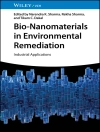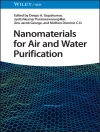The tanning industry is a major source of pollution worldwide, particularly in developing countries. The major public concern over tanneries has traditionally been about odours and water pollution from untreated discharges. Important poll- ants associated with the tanning industry include chlorides, tannins, chromium, sulphate and sulphides as well as trace organic chemicals and, increasingly, synthetic chemicals such as pesticides, dyes and finishing agents, as well as solvents. These substances are frequently toxic and persistent, and affect both human and environmental health. The primary focus in this book was to identify the recently developed ecoto- cological analytical trends (rapid, simple and inexpensive) related to the tanning industry on terrestrial and aquatic systems. The resultant research data reported, incorporates both field related and laboratory based techniques to address under- ing environmental problems in the tanning sector. The book also includes a chapter to explore the occupational hazards in a tannery environment caused by conta- nated dust. It was important to note that an optical set-up involving microscopy and digital imaging techniques was initially used to determine dust particle numbers and size distributions as a preamble to ascertaining the dust toxicity levels.
Daftar Isi
Main Pollutants and Environmental Impacts of the Tanning Industry.- Ecotoxicological Techniques and Assessment of Environmental Samples.- Occupational Risk in the Tanning Industry.- Ecological Risk Assessment (ERA) of a Tanning Industry.- General Discussion.
Tentang Penulis
Dr. Mwinyihija’s current research interests include impact of salt to the terrestrial/aquatic environment as a pollutant of the tanning industr, recovery mechanisms of river sediment on pollution load, determination of particulate matter and its ecotoxicological potency in the environment, and dynamics of diffuse contamination.












